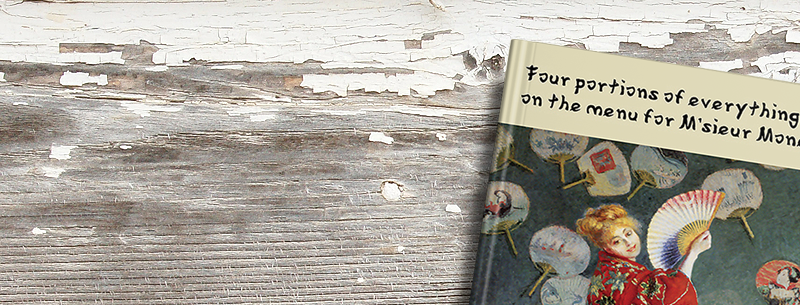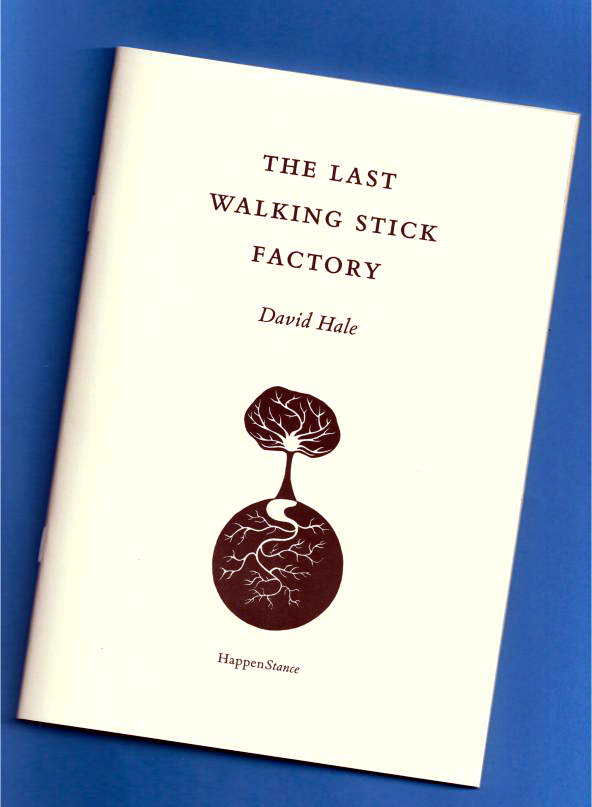Four Portions of Everything on the Menu for M’sieur Monet by Penelope Shuttle
-Reviewed by Angela Topping–
The cover promises travelling poems, and poems of place. Looking through, I can see that many of the locations are within the UK and commonplace. This is the stuff poetry is often made of, those oft-repeated journeys, so meditative during the changing seasons, for people who notice things, as poets do. There is also travel into the past, and poems which take us further afield.
The first poem, ‘Park Street’, starts off in an almost nostalgic way, with names of shops which speak of more innocent times:
The Cathedral Temperance Hotel,
The Post Office, E.M. Halfyard & Brownlow (costumiers),
Liberty & Co., William Roberts & Co. (tailors),
the Central Hotel, the London Rubber Company,
the stripe-canopied shops of the era.
Shuttle builds up a charming picture, not in sepia but brightly coloured. But then the killer, time, enters the scene in the form of the horses who ‘pull the hill up the hill’ as if pulling up a rug from this vision of London past. These lines are at the heart of the poem:
One autumn isn’t detective enough to find it.
Every minute of every year
takes a pinch of Park Street and hides it for good…
The lovely old fashioned (to us) shops vanish in what Shuttle calls ‘slow-mo’. This poem reminds me a little of U.A Fanthorpe’s ‘London Z to A’, which juxtaposes modern buildings with older ones, and goes back in time, whereas Shuttle moves forward.
Just as the horses are an instrument of time, in ‘Mulberry’, the tree itself is ‘wise and cautious’, and because of its self-protective growing habits, is now ‘so senior, so aged’, it has become ‘its own walking stick’. She’s now in Ireland. Then to ‘Paris’, where she learns ‘where the city keeps its sad heart’, followed by a church in Jukkas Jarvi, where she writes in the voice of four hourglasses. I like this globe-trotting order because it keeps things fresh and gives a sense of travel from one place to the next.
Rivers feature throughout, such as the Seine and our own lovely Thames, when Shuttle remembers a journey on the river with her aunt, from Staines to Windsor, capturing the indolent feeling of a slow sail past all the sights, such as the ‘bull-heavy houseboats’ with quintessentially English refreshments like squash and iced buns. The sea also appeals, with the evocative Bardsea Sands in Cumbria, with some playful imagery, such as ‘walking/ on the back / of a sleeping dinosaur’ and selkies in the Shetlands in ‘The Flow’.
Churches and cathedrals are always focal points for a traveller in a new city. Shuttle gives us picture-perfect views of St Peter’s Basilica in Rome, a Spanish one in ‘Columba of Cordoba’, which brings out the dark hot secrecy of small streets and ancient statues, ‘dark rat-run of relic-chapels’. I enjoyed her irreverence in this poem, to counterpoint the sheer over-the-top quality of high Catholicism of the past: ‘hogwash of gothic gold’, ‘writhing archangels’, ‘enough baby Jesuses/ to stock a divine crèche’, ‘ another of God’s jokes’. The layout of this poem is choppy short lines, some indented, which shows the split of architecture here, as the cathedral is built in the middle of a mosque.
There are some beautiful poems set in landscapes both in England and Ireland and an all-embracing love of nature, from small insects through birds to vast views and high hills. There is also a sense of others journeying, for instance the title poem references Monet dining at The Savoy, and his paintings of London, seen at an exhibition at Tate Britain. Shuttle is often accompanied by friends, and the reader becomes one of those friends through the shared experiences.
This elegantly produced pamphlet is light and yet robust enough to carry around in a pocket to peruse on journeys. I highly recommend it.





